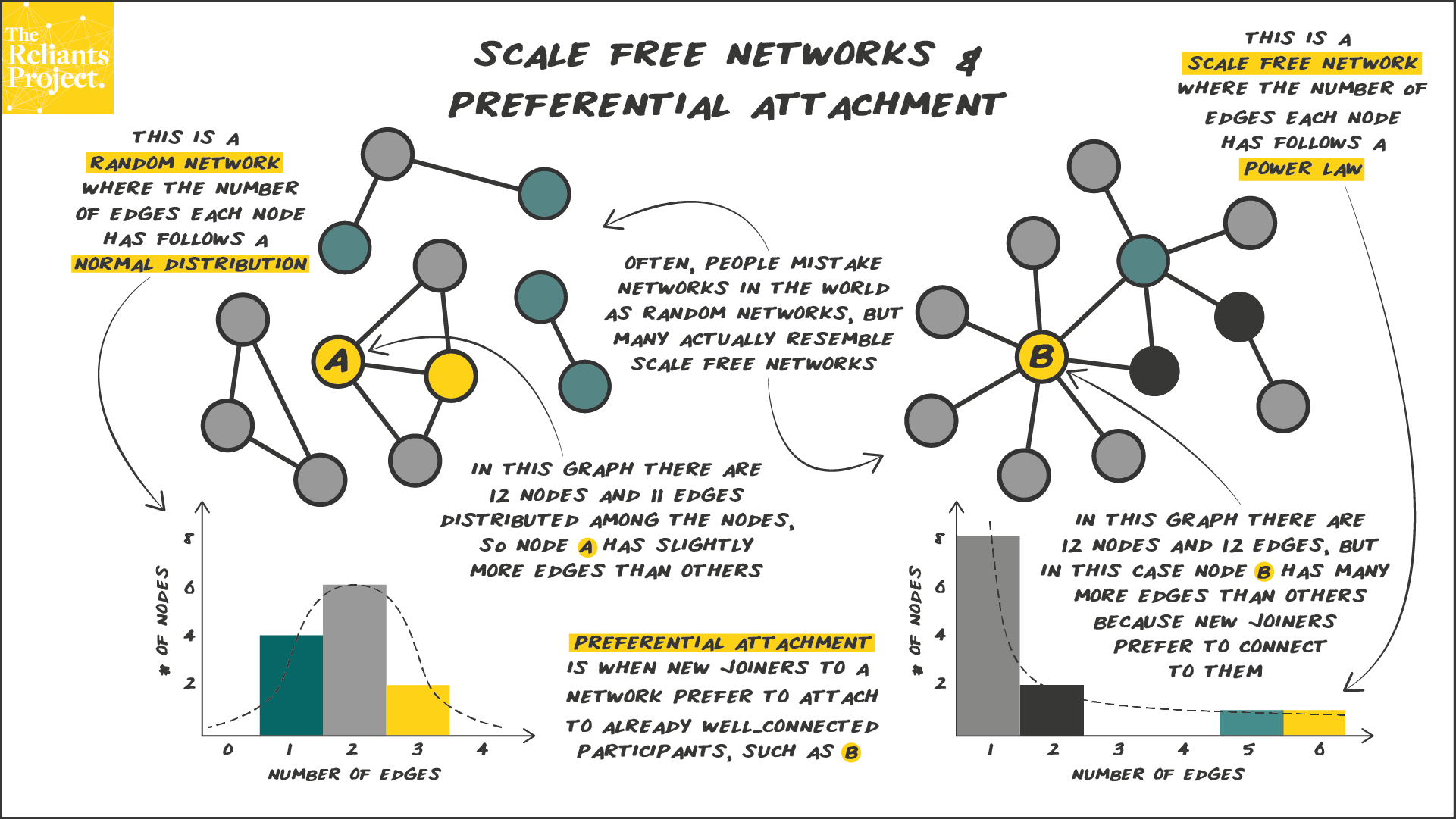This is the 9th post in a series. If you’re not familiar with how to read network graphs, you might prefer to start with Concept 1 or Concept 2.
This is one of the most complex concepts in this series, but we actually encounter it every day when we go online.
Barabasi’s groundbreaking work in the late 1990s showed that ties within networks weren’t always random. He used the internet to demonstrate that some websites had many more links than others. He also showed that the distribution of these website links followed a power law, not a normal distribution. A handful of sites at the time, like Yahoo, had most of the links, while most sites had only a handful of links. He calls these types of networks scale-free.
The two key features of networks that drive these outcomes are:
- Growth: more and more new participants joining the network
- Preferential attachment: new joiners to the network preferring to link to already well-connected participants
For example, if you were going to join a social media platform, you would likely choose a popular platform where many of your friends have already signed up. If you were creating a new blog, you might prefer to post on Medium rather than an independent site that does not get as much traffic. If you were walking around a new city trying to decide on a place to have dinner, you might choose the restaurant with five groups seated over the restaurant that only had one couple seated.
Often people assume that all networks are random. It’s helpful to remember that not all links are distributed evenly and not all networks are created equal.
Ready for the next concept? The next one in the series is Concept 10: Feld’s Friendship Paradox and Why Your Friends Have More Friends.

